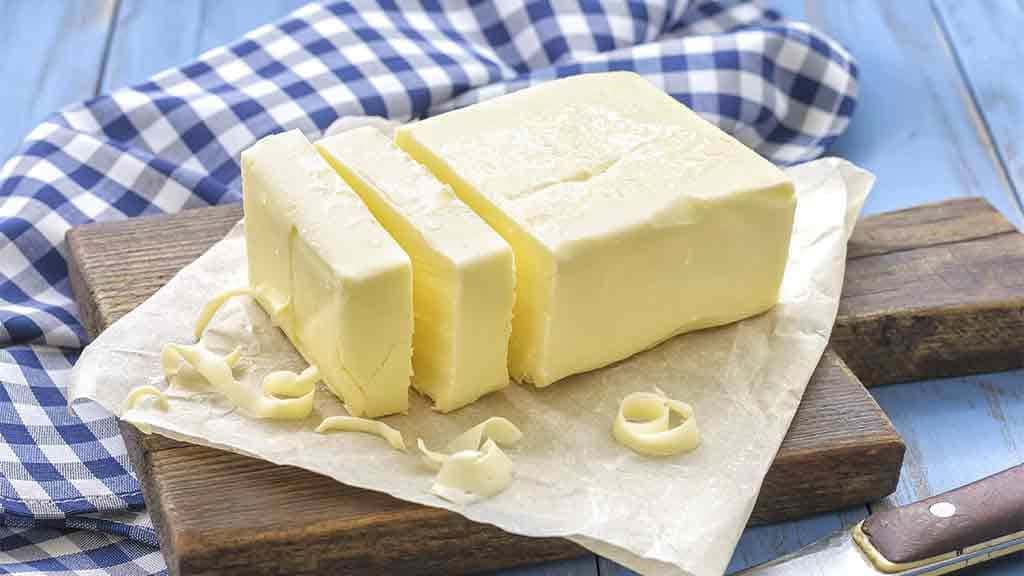“Trans-Fat Free!” “Non-Hydrogenated”. “No Cholesterol”. “5-percent Less Saturated Fat than Butter!” “100-percent Less Cholesterol than Butter!” “50-percent Less Fat and Calories than Butter!” “Good source of vitamin E!” “100-percent Expeller-Pressed Oils”.
Good grief! Confused? You bet! And you are not alone.
Margarine labels now have many more claims per square-inch because manufacturers have a reputation at stake.
Margarine & Trans Fats
For a time, we thought margarine was the perfect answer to butter – for a couple decades, in fact! Then we hear “WAIT! All that margarine you have been eating is bad for you! There is something called trans fats we now believe contribute to cancer and other life-threatening diseases and it is in margarine!” As a result of all this, many went back to real butter – at least it is made from nature, not man, consequently, no trans fats. Trans fats are now considered worse than animal fats.
In light of this breakthrough, manufacturers of margarine began to re-work their products. As a result, there are now dozens of margarine’s, many called “spreads”, which technically means they contain less than 80-percent oil and are low in artery-clogging fats. This guide will tell you how to find them.
Why Trans Fat is So Bad?
Trans may lower HDL (good) cholesterol, makes it more difficult for arteries to dilate and raise the risk of diabetes. Most stick margarine has more trans or saturated fat than tub margarine. The trans fat helps stick margarine retain its shape.
Minimize Saturated-plus-Trans Fat
This does not mean you have to switch to fat free margarine. In fact, unsaturated fats, especially polyunsaturated ones, are actually good for you. They counteract saturated and trans fats by lowering LDL (bad) cholesterol. As long as 30-percent of the fat in your spread is sat-plus-trans, it should help lower your cholesterol. Less than 20% is even better. The trick here is that the labels often do not tell you about the trans fat, even when companies know how much is in their spreads.
Count Calories
Due to polyunsaturated fat, some of the better-for-you margarine should lower your cholesterol more than low-fat or fat free ones but you may pay a price for that benefit because each tablespoon of a full-fat margarine has about 100 calories. A “light” spread, on the other hand, has 40 to 50 calories and a fat free spread has no more than five. The best choice amongst this confusion is Smart Beat, which weighs in at only 20 calories. Please note that less fat means more water in your spread so you may not be able to use it for baking, sautéing or on hot toast. Many labels on spread – albeit in very fine print – do have a warning stating “not recommended for frying or baking”.
Ignore Cholesterol Free Claims
Nearly all margarine is cholesterol free. The question is whether they will raise your “bad” cholesterol and that depends on how much saturated and trans fat they contain. To avoid misleading people, the FDA prohibits “cholesterol-free” claims on foods with more than two grams of saturated fat. However, to date there are no limits on trans fat.
Fat Free Cooking Claim
This claim is found on products such as PAM and other cooking sprays that come in aerosol cans. These are good because their key ingredient is unsaturated oil. There are some calories here. A one-second spray has seven calories, which means it delivers nearly one gram of fat. So if you spray for about six seconds you will be getting a teaspoon of oil. In summary, fat free does not necessarily mean fat free!
Pumps are a different story. Some, like “I Can’t Believe It’s Not Butter” spray are fat free not just because you use so little, but because they have equal amounts of water and oil keeping the calories down. It is not recommended for spraying on toast because you get a very unappealing, soggy mess.
Lactose Free
In most cases, this claim means the spread does not contain any butter or the tiny bit of whey that manufacturers add to many margarine and spreads. This is important to those practicing a Vegan diet or those allergic to dairy. If you are lactose intolerant, it does not mean a thing. Take not of the zero next to “Total Carbohydrates” on the label of any margarine, lactose free or not. That means each serving cannot have more than a half-gram of sugar. Even if all the sugar came from lactose, it would not cause stomach problems in the lactose intolerant.
Light
Half the calories are a plus if you are either overweight or trying not to be.
Made with Yogurt or Buttermilk
The yogurt is Brummel and Brown’s spread may add to its creamy-but-tart flavor. The problem here comes into play with the nutrition aspect. There is not enough yogurts to benefit from its vitamins, protein and active cultures. The same applies to brands made with sweet cream buttermilk. Enjoy the flavor if you like it, but the nutritious benefits are simply not there.
Omegas
Spectrum Naturals Essential Omega spread has six grams of omega-3 fats, from flaxseed oil, in each tablespoon. That is impressive, since omegas lower cholesterol and may help prevent heart disease by protecting the heart’s rhythm. However, to date we only have evidence that it is the omega-3 in fish oil that is beneficial. If there are any benefits with flax, the food is so rarely eaten that researchers are unlikely to pick up on it.
Trans-Free
Important! This means a tablespoon of the spread has no more than half a gram of trans. For some reason, labels of a few trans-free spreads do not say a word about trans. Go figure!
Whipped
If you really prefer butter, use whipped. Adding air means there is less room for fat. Regular butter contains 11 grams of fat per tablespoons – eight of those saturated. A tablespoon of whipped butter contains 7 grams of fat. Five of them are saturated. That is still a bit high in the fat, but any reduction is helpful. Just keep in mind that seven grams of fat is a quarter of a day’s fat and try to work the rest of your diet around the inclusion of whipped butter and you should be able to have your butter and eat it, too!
Read More: KetoCharge reviews 2022
Popular Margarine Spreads
Benecol
Benecol and Take Control contain plant extracts that lower cholesterol. They are not as powerful as statins or other medications, but two or three tablespoons a day (six to nine pats) can cut LDL (bad) cholesterol by about 15-percent in people with high levels. Both brands are low enough in saturated and trans fat to earn merit. These spreads are designed for people who have been diagnosed with high cholesterol. Although there is little evidence they can cause harm, the Food and Drug Administration is still looking into possible adverse effects. For example, the spreads can lower beta-carotene levels, which is why the European Union and Australia require labels to say they are not recommended for children or pregnant or lactating women. To be safe, use these spreads only if you need them and do not exceed the recommended doses – two to three tablespoons a day.
Smart Balance
Smart Balance claims to have a “patented blend to help improve cholesterol ratio”. Studies conclude that if the fat in people’s diets mimic the blend of saturated, monounsaturated and polyunsaturated, it will lower LDL (bad) levels of cholesterol and raise HDL (good) levels. In short, Smart Balance is a good choice. The “no trans fatty acids…naturally” claim stems from the replacement of trans fat with saturated fat — in Smart Balance the replacement is palm oil – and there is not enough palm oil in their product to raise cholesterol.
Parkay
Most spreads contain vitamin A from the beta-carotene used to give them a butter color. Promise goes one step further and tallies up to 15-percent of a day’s worth of vitamin E. Parkay Calcium Plus has 10 percent of a day’s vitamin E and 10-percent of a days calcium and 15-percent of a days vitamin D for good measure. While this all sound great, all the extras are only worth it if they make the spread taste better. You can get that much vitamin E in a tablespoon of most oils, but very few margarine’s. As for vitamin D, the only place you can get that is from the sun or a multivitamin, milk, fatty fish or fortified foods such as a breakfast cereal.
Fleischmann’s
First, remember margarine and spreads have to contain some trans or saturated fat or they would be liquid. Having said that, some margarines disclose they are made with safflower, olive, canola or other oils but that does not mean eating them is equal to using those oils. Most of the margarine-spread products are a mixture of oils. Fleischmann’s Premium Blend, for example, states it is made with olive oil but it is also made with soybean oil. There simply is no getting around the fact that if you want to know exactly what you are getting in the product your purchase, you have to check the ingredient list, not just the amount of saturated and trans fat on the nutrition label.




